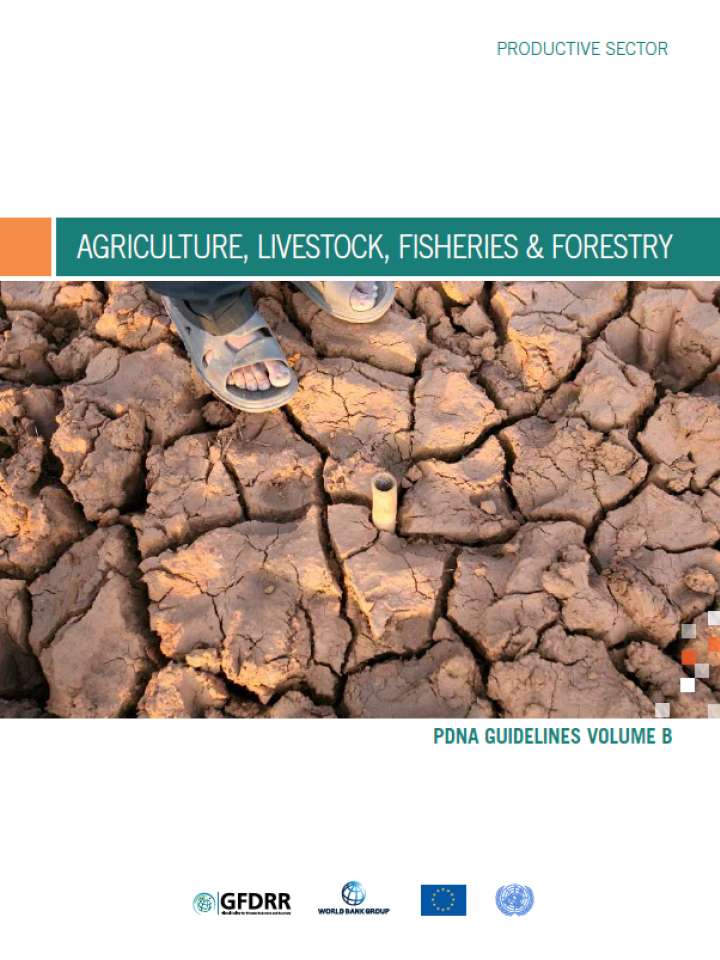Post-disaster needs assessments guidelines: Volume B - Agriculture, Livestock, Fisheries and Forestry
This chapter is part of the PDNA Guidelines Volume B for the Productive Sector. It provides guidance for those working in the Agricultural Sector on conducting a post-disaster needs assessment, including analysing the effects and impact of a disaster, identifying recovery needs and creating a recovery strategy. In this chapter, the Agricultural Sector is divided into four main sub-sectors, namely: 1) Crops; 2) Livestock (both production and animal health); 3) Fisheries and Aquaculture (including capture fisheries); and 4) Forestry.
This chapter is underpinned conceptually by a Sustainable Livelihoods Framework, which is a people-centred approach that allows flexible assessment and planning and can facilitate a comprehensive assessment. A Sustainable Livelihoods Framework consists of four key elements:
• Vulnerability context: shocks, trends, etc.;
• Livelihood assets and activities: human, natural, financial, social and physical capital;
• Structures and processes: institutions, policies, social processes, etc.; and
• Livelihood strategies and outcomes: increased income, reduced vulnerability, improved
food security, etc.
These guidelines also follow an ecosystem perspective that takes into account the natural resource base upon which livelihoods depend. The sector recovery plan proposed would ensure the integrated management of land, water, forests, wetlands, soils and other resources that sustain livelihoods and promotes conservation and sustainable use in an equitable way. This volume is available in English, French, and Russian.
This chapter is underpinned conceptually by a Sustainable Livelihoods Framework, which is a people-centred approach that allows flexible assessment and planning and can facilitate a comprehensive assessment. A Sustainable Livelihoods Framework consists of four key elements:
• Vulnerability context: shocks, trends, etc.;
• Livelihood assets and activities: human, natural, financial, social and physical capital;
• Structures and processes: institutions, policies, social processes, etc.; and
• Livelihood strategies and outcomes: increased income, reduced vulnerability, improved
food security, etc.
These guidelines also follow an ecosystem perspective that takes into account the natural resource base upon which livelihoods depend. The sector recovery plan proposed would ensure the integrated management of land, water, forests, wetlands, soils and other resources that sustain livelihoods and promotes conservation and sustainable use in an equitable way. This volume is available in English, French, and Russian.
